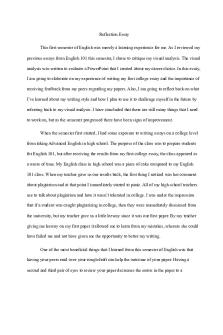Phil Banking System - This is a Reflection essay PDF

| Title | Phil Banking System - This is a Reflection essay |
|---|---|
| Author | Cateleen Bacani |
| Course | BS in Accountancy |
| Institution | University of the Philippines System |
| Pages | 2 |
| File Size | 54.1 KB |
| File Type | |
| Total Downloads | 293 |
| Total Views | 854 |
Summary
The Philippine Banking SystemThe Philippines is known as an archipelagic country in the Southeast Asia Region because of at least 100 million residents. It is branded as a tiger cub economy since the potential to the tap market is no doubt an option for the investors. The banks in the country are we...
Description
The Philippine Banking System The Philippines is known as an archipelagic country in the Southeast Asia Region because of at least 100 million residents. It is branded as a tiger cub economy since the potential to the tap market is no doubt an option for the investors. The banks in the country are well-established from liquidity standpoint. The Bangko Sentral ng Pilipinas (BSP) is the central bank of the Republic of the Philippines. It was established on July 3, 1993 pursuant to the provisions of the 1987 Philippine Constitution and the New Central Bank Act of 1993. The BSP took over from the Central Bank of Philippines, which was established on January 3, 1949 as the country’s central monetary authority. The BSP enjoys fiscal and administrative autonomy from the National Government in the pursuit of its mandated responsibilities. The Philippines banking system from BSP web site is composed of: Universal and commercial banks are the core banking system that have a full service system like accepting deposits, making loans and providing fee-based services and also a universal banks provides investment in banking function. The top universal and commercial bank is Banco De Oro Unibank Inc. who is currently the largest bank in the Philippines in terms of assets. A total asset as of December 31, 2019 is 3,069,394.98 according to the BSP web site. Thrift banks it is composed of savings and mortgage banks, private development banks, stock saving and loan associations and micro finance thrift banks. This institution generally helps small and medium enterprises and individuals with working capital and business products. The top thrift bank is the BPI Family Savings Bank Inc.. Their total asset as of December 31, 2019 is 284,212.91 according to the BSP website. Rural and cooperative banks differ by ownership. The rural banks are privately owned and managed while cooperative banks are organized and owned by the cooperatives. Small institutions that mainly assist farmers during farming cycle to sell their goods to market. The top rural and cooperative bank is the One Network Bank Inc. which is their total assets as March 31, 2018 is 27,219.54 according to the BSP website. Non-banks with quasi-banking system is an institution that borrows funds from 20 or more lenders for the purposes of relending or purchasing receivables and other obligations. Some institutions that are non-banks are the Cebu International Finance Corporation, RCBC Capital Corporations, Toyota Financial
Services Philippines Corporation and Philippines Depository and Trust Corporation. In terms of ownership, they have foreign bank branches and subsidiaries including a commercial and thrift banks, most importantly government banks. Our banking system is fundamental healthy and properly functioning economy. For the locals that attentive in business, they go to the banks that would provide them capital. And for depositors, depositing in bank would be the best option where to keep their money. Our country’s majority of consumers prefer to pay bills over the counter while other countries consumers are most prefer to use banks.
Sources: http://www.bsp.gov.ph/banking/directory.asp? InstitutionTypeID=14&submit=Find http://www.bsp.gov.ph/banking/psoc_rb/Rank%20(Total%20Assets).htm http://www.bsp.gov.ph/banking/psoc/by_ranks/assets.htm http://www.bsp.gov.ph/banking/psoc_tb/assets.htm http://www.bsp.gov.ph/banking/bspsup.asp...
Similar Free PDFs

This is a Test - Essay
- 2 Pages

This Is Me essay - Grade: A
- 4 Pages

IVY essay - this is good
- 241 Pages

Reflection Essay - Grade: A
- 2 Pages

Reflection essay - Grade: A
- 3 Pages

Banking essay
- 5 Pages

PHIL 2805- Essay 2 - Grade: A+
- 7 Pages

BANKING MANAGEMENT SYSTEM
- 36 Pages

Banking System Project
- 93 Pages

Banking Management System
- 40 Pages

HUM 391 This is America Essay Final
- 11 Pages

REFLECTION ESSAY
- 2 Pages

Reflection Essay
- 6 Pages

Reflection Essay
- 4 Pages
Popular Institutions
- Tinajero National High School - Annex
- Politeknik Caltex Riau
- Yokohama City University
- SGT University
- University of Al-Qadisiyah
- Divine Word College of Vigan
- Techniek College Rotterdam
- Universidade de Santiago
- Universiti Teknologi MARA Cawangan Johor Kampus Pasir Gudang
- Poltekkes Kemenkes Yogyakarta
- Baguio City National High School
- Colegio san marcos
- preparatoria uno
- Centro de Bachillerato Tecnológico Industrial y de Servicios No. 107
- Dalian Maritime University
- Quang Trung Secondary School
- Colegio Tecnológico en Informática
- Corporación Regional de Educación Superior
- Grupo CEDVA
- Dar Al Uloom University
- Centro de Estudios Preuniversitarios de la Universidad Nacional de Ingeniería
- 上智大学
- Aakash International School, Nuna Majara
- San Felipe Neri Catholic School
- Kang Chiao International School - New Taipei City
- Misamis Occidental National High School
- Institución Educativa Escuela Normal Juan Ladrilleros
- Kolehiyo ng Pantukan
- Batanes State College
- Instituto Continental
- Sekolah Menengah Kejuruan Kesehatan Kaltara (Tarakan)
- Colegio de La Inmaculada Concepcion - Cebu

